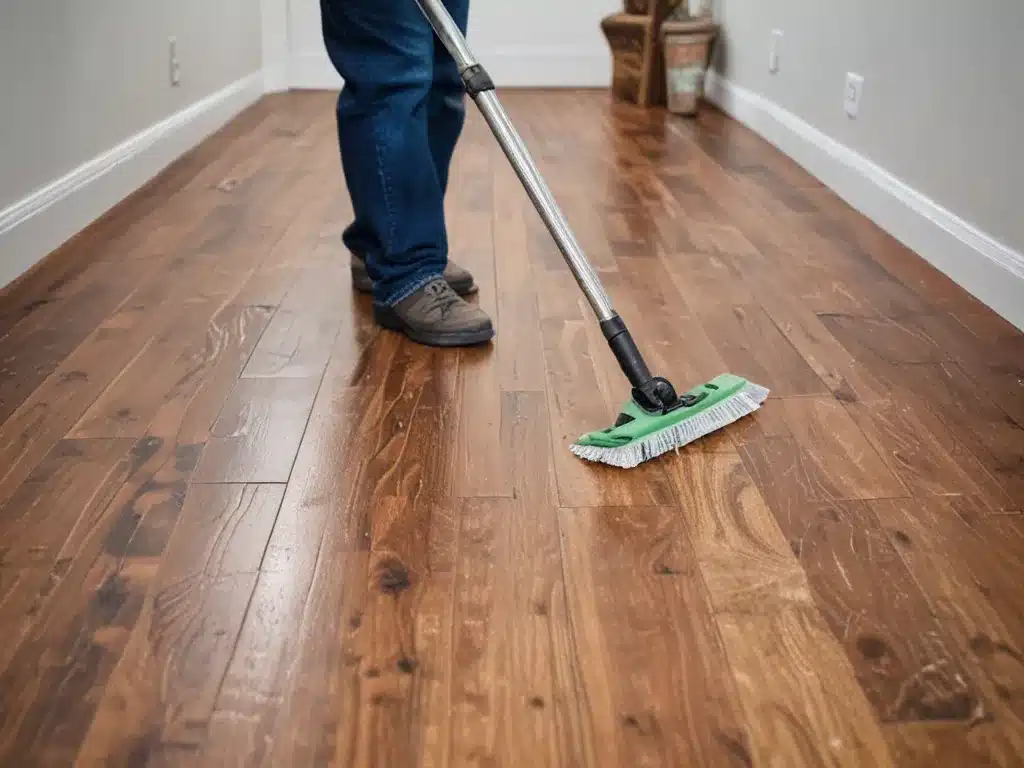The long winter months can truly do a number on your wood and tile floors. All that tracked in salt, mud, snow, and dirt builds up and leads to dull, grimy floors that seem impossible to revive. But with some deep cleaning tricks and techniques, you can get your floors looking like new again this spring!
Why Winter Weather is Tough on Floors
There are a few key reasons that winter weather is so hard on wood and tile floors:
-
Salt – Salt that gets tracked inside from icy sidewalks and roads acts as an abrasive and can scratch and wear down floor finishes. The salt also attracts moisture, leading to swelling and cracks.
-
Mud and grit – Wet, muddy snow and slush grinds dirt, sand, and grime into the floors every time someone walks inside. This acts like sandpaper on the floor.
-
Lack of humidity – Dry winter air can cause wood floors to develop cracks and gaps. The boards shrink and contract.
-
Reduced cleaning – When it’s cold out, people aren’t motivated to take off their shoes and messy cleaning routines slide. Floors don’t get mopped as often.
Deep Cleaning Checklist for Wood Floors
To fully revive wood floors after winter, follow this intensive cleaning regimen:
Sweep Away Surface Grit
- Use a dry mop or soft broom to sweep up and collect built up surface sand and dirt. Vacuum if needed with the proper hard floor attachment.
Wash with a Wood Floor Cleaner
- Mix a wood floor cleaner, like Bona Hardwood Floor Cleaner, in a bucket according to directions. Use a tightly wrung mop to wash the floors. Don’t soak or saturate the boards.
Inspect for Deep Scratches
- Once clean, run your hands over the floors and inspect closely for any deep scratches, gouges or other damage caused by salt or grit. Make notes on areas that need repairs.
Reseal If Needed
- If the winter wore down sections of the protective sealant, use a water-based polyurethane to reseal the floors. This will refresh the coating.
Restore with Oil Soap
- For a deeper clean, use an oil soap product specifically formulated for wood. This will further break up dullness and buildup in the grain.
Deep Cleaning Checklist for Tile Floors
Give tile floors some extra attention too with these steps:
Sweep and Vacuum
- As with wood floors, start by sweeping and vacuuming up any loose grit and debris. Get into corners and grout lines.
Mix Up a Strong Tile Cleaner Solution
- In a bucket, mix a tile cleaner, like Zep Grout Cleaner, with very hot water per label instructions. The hotter the water, the better it will dissolve buildup.
Scrub All Grout Lines
- Using a stiff grout brush, work the cleaning solution into the grout lines and scrub to lift dirt from the porous grout. Wipe up excess moisture as you go.
Rinse and Repeat
- Go over the tile with clean water and rinse away all cleaning solution residue. Repeat steps as needed for badly soiled areas.
Inspect and Re-seal Grout
- Check for areas where the grout is crumbling or missing after cleaning. Once the tile is fully dry, use a grout sealer product to protect the grout from future stains.
Polish and Shine
- For extra shine and sparkle, go over the tile with a microfiber mop and tile polishing spray. This removes any last traces of haze and helps repel future dirt.
Tips for Protecting Floors After Deep Cleaning
After all that intensive scrubbing and cleaning, be sure to keep your floors looking revitalized by:
- Placing mats at entrances to trap dirt and absorb moisture
- Enforcing a shoe-free policy indoors
- Cleaning spills quickly to prevent stains
- Maintaining indoor humidity around 40-45% to protect wood floors
With some elbow grease and the right techniques, you can successfully deep clean your wood and tile floors after a winter of wear. Just be sure to stay on top of regular gentle cleaning as well to maintain the floors’ renewed beauty. Getting floors deep clean and keeping them that way is well worth the effort. Enjoy your refreshed floors this spring!







